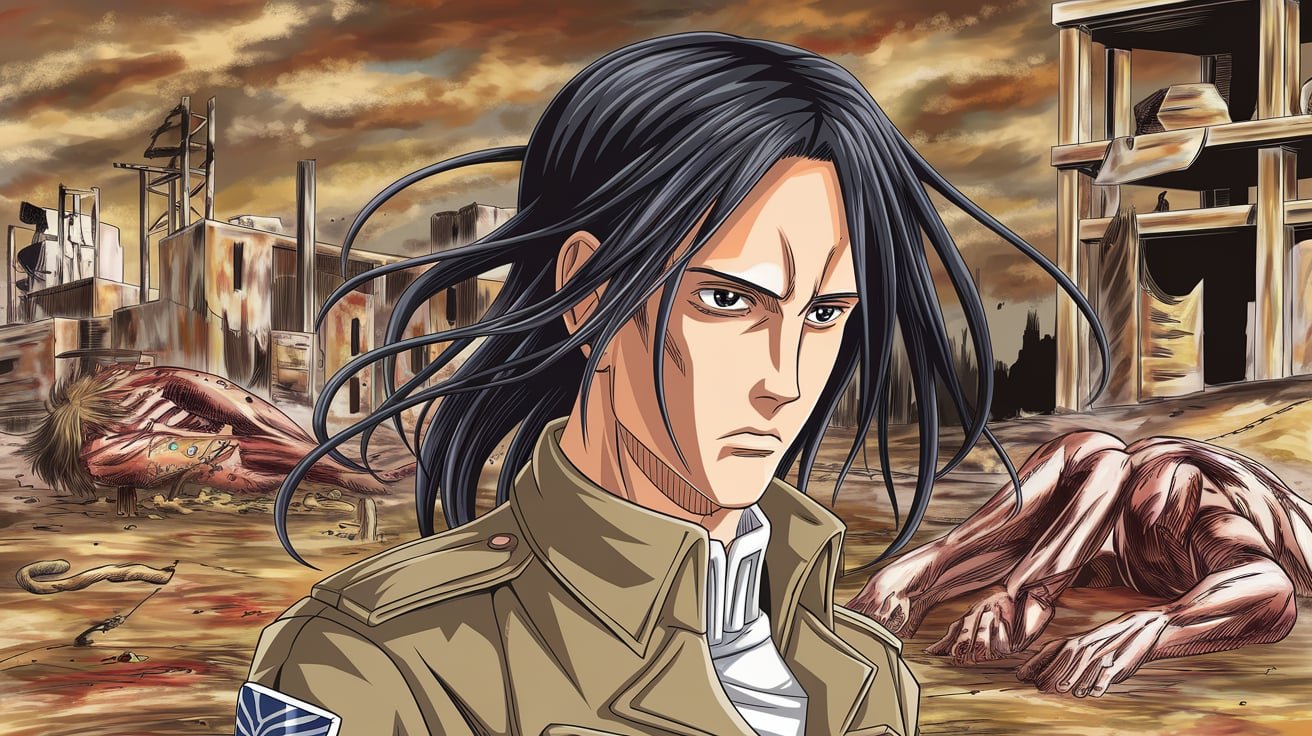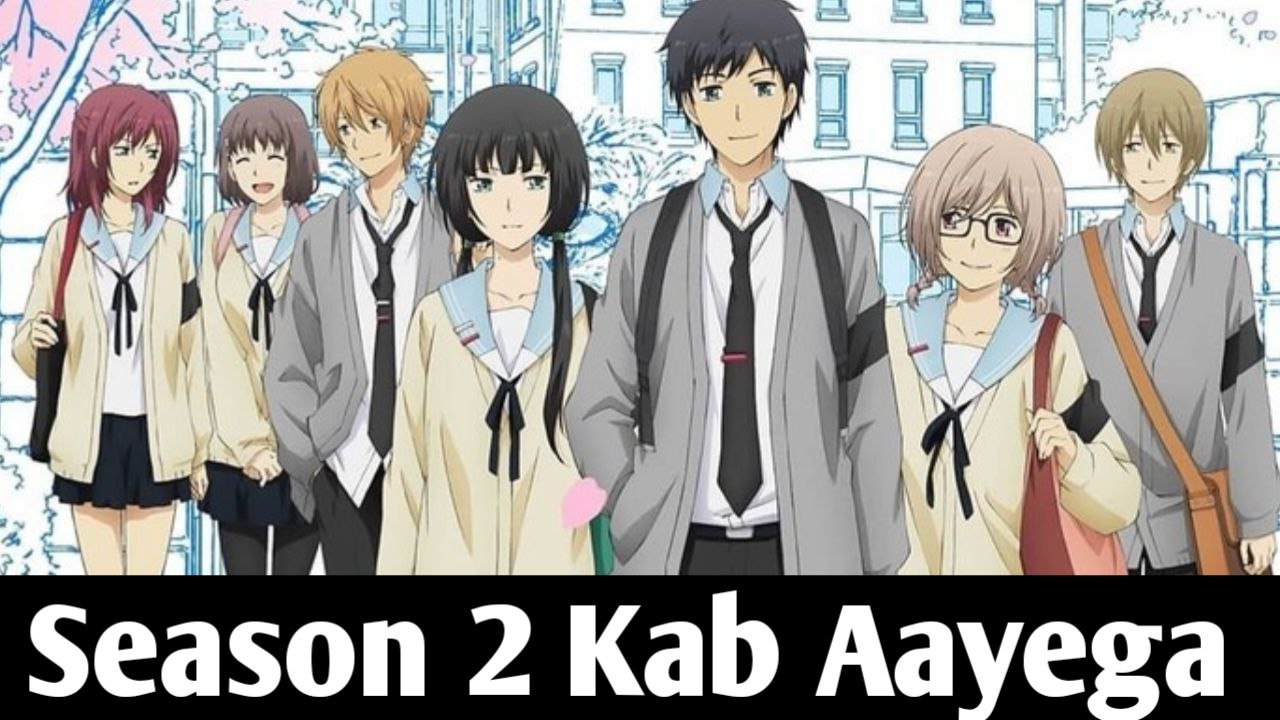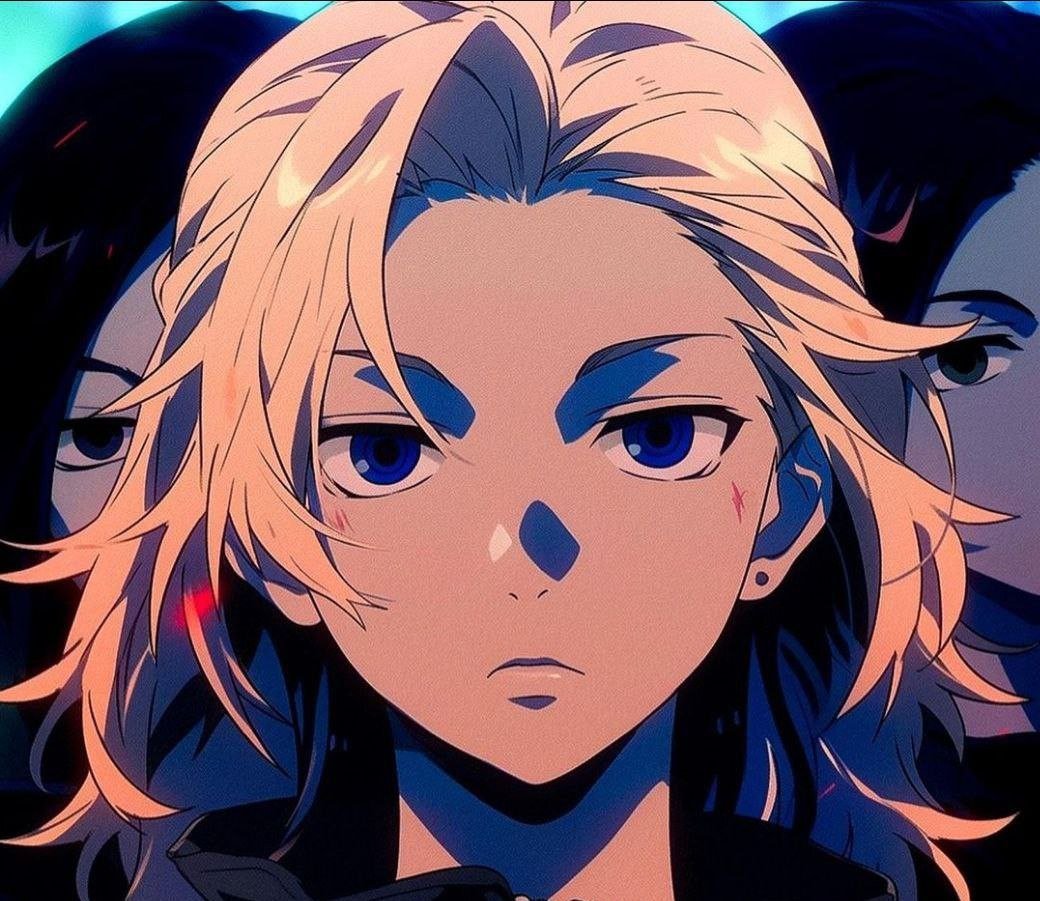Table of Contents
Introduction to Attack on Titan Season 2
Attack on Titan Season 2 continues the gripping narrative established in its inaugural season, which took the anime community by storm. This season aired from April to June 2017, featuring a total of 12 episodes produced by Wit Studio, with the series’ direction spearheaded by Masashi Koizuka. The adaptation of Hajime Isayama’s acclaimed manga delves deeper into the rich lore surrounding the Titans and the struggles of humanity against these colossal beings. Following the dramatic and action-packed conclusion of Season 1, fans eagerly awaited the continuation of the story, particularly interested in uncovering the mysteries that were only hinted at in the previous episodes.
The themes of Attack on Titan Season 2 contrast the stark realities of survival against an overwhelming adversary, emphasizing human resilience and the various moral dilemmas faced by the characters. The season shifts its focus somewhat, peeling back layers of the Titans’ origins and the societal structures entrenched within human communities. This aspect of the narrative invites viewers to ponder questions of morality, loyalty, and the intrinsic value of humanity in the face of extinction. The stakes are elevated, as new revelations lead to conflicts among both Titans and humans alike.
Additionally, Season 2 reintroduces several pivotal characters, shifting perspectives and character arcs that significantly enhance the storyline. The circumstances surrounding the Titans and their connection to some human characters add a layer of depth that enriches the emotional output of the series. This season also begins exploring internal conflicts within the walls that humanity has protected, highlighting the ever-present struggle between hope and despair. Collectively, these developments set the groundwork for an intense progression into the subsequent arcs of the Attack on Titan saga.
The Production Team and Their Roles
The production of “Attack on Titan Season 2” was spearheaded by a skilled team of professionals, each contributing their expertise to bring the anime to life. At the helm was Tetsurō Araki, serving as the chief director. Known for his work on various acclaimed titles, Araki’s vision and direction have been pivotal in shaping the overall tone and dynamics of the series. His earlier projects, such as “Death Note” and “Kabaneri of the Iron Fortress,” exhibit his ability to maintain suspense and create emotionally engaging narratives, attributes that are essential in adapting the intense storyline of “Attack on Titan.”
Assisting Araki was Masashi Koizuka, who took the role of the director for this season. Koizuka’s experience in directing episodes of the first season ensured a smoother transition and consistency in storytelling. His attention to detail and understanding of character arcs enhanced the emotional impact of the series, allowing fans to connect with the characters on a deeper level.
Yasuko Kobayashi played a crucial role in series composition, meticulously adapting Hajime Isayama’s original manga. Kobayashi is recognized for her previous work on successful adaptations, such as “The File of Young Kindaichi,” which showcased her talent for preserving essential plotlines while crafting an engaging narrative flow. This aptitude greatly benefited “Attack on Titan Season 2,” as the intricate storylines necessitated a cohesive and compelling script.
Lastly, the character designs by Kyōji Asano added distinctiveness to the visuals of the season. Having contributed to other popular works, Asano’s designs not only maintained fidelity to the original manga character appearances but also introduced subtle improvements that enhanced their portrayal within the animated context. The collaborative efforts of this talented production team were integral in defining “Attack on Titan Season 2,” bolstering its quality and appeal to both fans and newcomers alike.
The Clash of the Titans Arc Explained
The “Clash of the Titans” arc serves as a pivotal segment in Hajime Isayama’s acclaimed work, transitioning from a focus on survival and the human condition to a deeper exploration of the underlying truths about the titans. This arc encompasses chapters 35 to 51 and marks a significant shift in the narrative, exposing critical revelations about the titans themselves and their connection to humanity. Central to this storyline are the introduction of new titan forms, notably the Armored Titan and the Female Titan, whose appearances initiate a series of confrontations that challenge previous notions held by the characters and audiences alike.
The emotional resonance of this arc is profound, particularly in the character development of key figures such as Eren Yeager, Reiner Braun, and Annie Leonhart. Eren’s struggle with his identity as a titan, alongside Reiner’s internal conflict about his dual existence as a warrior and a soldier, adds layers of complexity to the story. The dichotomy of friend versus foe becomes increasingly ambiguous, aligning with the moral complexities inherent in warfare and loyalty. The confrontation between Eren and these new titans raises the stakes significantly, not just for Eren, but for humanity’s fight against their oppressors.
Main Characters and Their Developments
In the landscape of Attack on Titan Season 2, the personal evolution of key characters serves as a pivotal aspect of the narrative. Eren Jaeger, the protagonist, embarks on a tumultuous journey, grappling with his identity and the weight of his responsibilities. As the season unfolds, Eren confronts the harsh realities of a world teeming with Titans. His character transitions from a headstrong youth seeking vengeance against Titans to a more complex individual striving to comprehend the deeper implications of freedom and humanity. This conflict is central to Eren’s development and is catalyzed by his encounters with formidable opponents and allies alike.
Equally compelling is Mikasa Ackerman, Eren’s fiercely loyal friend and protector. Throughout the season, Mikasa’s character is further fleshed out, revealing her determination to safeguard Eren while battling her own emotions and vulnerabilities. Her bond with Eren is tested, providing depth to their relationship. Another significant figure is Armin Arlert, whose intelligence shines through as he strategizes in dire situations. Armin’s evolution from a timid boy to a more confident strategist underscores the collective growth of the 104th Training Corps.
Additionally, characters like Reiner Braun and Bertholdt Fubar play crucial roles in the progression of the plot. Their dual identities as warriors and comrades lead to profound internal conflicts, portraying the moral ambiguity pervading the series. This complexity enriches not only their characters but also raises questions about loyalty and betrayal among friends.
In essence, the developments seen in Attack on Titan Season 2 amplify the stakes for the main characters. As they navigate a world fraught with danger and ideological strife, their growth becomes a poignant reflection of the overarching themes of the series. The interplay among the characters’ evolving dynamics creates a compelling narrative that invites viewers to engage deeply with their journeys.
Music and Soundtrack Highlights
In Attack on Titan Season 2, the musical landscape is masterfully crafted by composer Hiroyuki Sawano, who has become a standout name in anime scoring. His ability to weave intricate orchestral arrangements with electronic elements creates a soundscape that amplifies the intensity of the series. Throughout this season, the score effectively underlines pivotal moments, heightening emotional stakes and augmenting action sequences. The rich tapestry of sound not only supports the narrative but also forms an integral part of the viewers’ experience, immersing them deeper into the world of Titans.
The opening theme, “Shinzo wo Sasageyo!” performed by Linked Horizon, encapsulates the struggle and determination of the characters. Its powerful lyrics and driving rhythms instill a sense of urgency and heroism that resonates deeply with the audience. The song serves as a rallying cry for the protagonists, embodying their fight against despair and the monumental challenge posed by the Titans. Such themes are reflective of the internal and external battles characters face, reinforcing the overarching motifs throughout Attack on Titan Season 2.
Equally compelling is the ending theme, “Yūgure no Tori,” performed by Ikimono Gakari. This song provides a poignant contrast to the relentless energy of the opening theme. It features softer melodies that evoke a sense of reflection and closure, allowing viewers a moment to process the intense events from each episode. The lyrical content complements the emotional journey of the characters, as well as the melancholic atmosphere often encountered in the series. Together, these musical elements not only enhance the viewing experience but also anchor key emotional themes, making them memorable aspects of Attack on Titan Season 2.
Viewer Reception and Critical Analysis
The second season of Attack on Titan has garnered significant attention from both viewers and critics alike. According to metrics from platforms such as Rotten Tomatoes, this installment managed to secure a substantial approval rating, reflecting its positive reception among fans. Critics have often praised the season for its compelling story arcs, character development, and thrilling action sequences. These elements have contributed to a heightened excitement surrounding the series, showcasing the effectiveness of its narrative style in maintaining viewer engagement.
Despite the praise, a recurring theme in critiques of Attack on Titan Season 2 pertains to its cliffhanger endings, which have left audiences yearning for more content. Such unresolved plot points have bred a sense of anticipation amongst viewers, who eagerly await the subsequent developments. The pacing of the season has also garnered mixed reviews; some viewers appreciated the deepening of character backstories, while others found the slower moments a departure from the high-stakes action that initially captivated audiences in the first season.
In conclusion, viewer reception of Attack on Titan Season 2 has been a blend of admiration and varying degrees of disappointment. While critics lauded the season’s strengths, the unresolved elements and pacing choices contributed to an atmosphere of divided opinions among the audience. The anticipation cultivated through cliffhangers serves to reinforce the series’ capacity to engage its viewers, solidifying its place within contemporary anime discourse.
The Short Episode Count: Reasons and Implications
Attack on Titan Season 2 is notable for its concise 12-episode format, a departure from the first season’s more extensive offering. One of the primary reasons for this limited episode count can be attributed to the considerable challenges faced by the production team. The anime industry is well-known for its demanding schedules and tight deadlines, which can create significant strain on the creative process. Staffing issues often arise, leading to a shortage of animators and other essential contributors. In the case of Attack on Titan, the second season was marred by these industry-wide hurdles, making it difficult to commit to a longer format without sacrificing quality.
Moreover, the strategic planning behind Attack on Titan Season 2 was crucial in ensuring that the adaptation remained faithful to the manga. The creators aimed to deliver a compelling narrative that closely followed the source material’s tone and pacing. By limiting the number of episodes, the production team could focus on crafting a tighter storyline and refining animation quality. This approach ensured that fans received a polished product, despite the reduced episode count. The decision also set a precedent for other series, highlighting the importance of quality over quantity.
The implications of this reduced episode format extend beyond mere content delivery; they affect viewer expectations and engagement. Each episode in Attack on Titan Season 2 is densely packed with action, character development, and plot progression. While some fans may lament the brevity of the season, the focused storytelling has garnered praise for its ability to maintain tension and interest throughout the season. This method encourages viewers to stay invested, as each episode is critical to the overarching narrative that unfolds. As a result, the approach taken in Attack on Titan Season 2 reflects broader trends in the anime industry, balancing production realities with the demand for high-quality storytelling.
The Connection to Eren’s Titan Transformation
In the narrative of Attack on Titan Season 2, one of the defining moments occurs when Eren Yeager transforms into a titan for the first time. This pivotal event not only alters the trajectory of Eren’s character arc but also serves as a catalyst for the unfolding plot in the series. His transformation raises critical questions about identity, humanity, and the burden of possessing such extraordinary power. By bridging the gap between human and titan, Eren’s metamorphosis enriches the thematic layers of the story.
The immediate aftermath of Eren’s transformation brings forth a myriad of reactions from those around him, particularly from his friends and fellow soldiers. Characters such as Mikasa and Armin experience conflicting emotions ranging from fear to admiration. This complex web of feelings adds emotional depth to the character dynamics, enhancing the viewer’s understanding of their struggles and motivations. As these relationships evolve through Attack on Titan Season 2, the stakes become increasingly personal, heightening the tension and drama inherent in their fight for survival.
Furthermore, Eren’s ability to transform into a titan forms the foundation for subsequent revelations surrounding the origins of titans and their connection to human beings. This revelation delves deeper into the lore of the series and sets the stage for future conflicts. It raises the possibility of Eren serving not just as a weapon but as a pivotal player in the battle for humanity’s existence. The implications of his transformation echo throughout the series, as they play a crucial role in shaping the decisions and actions of key characters as the story progresses.
Thus, Eren’s titan transformation is more than a mere plot device; it is an integral component that influences relationships and narrative direction, weaving a complex tapestry of conflict and growth that defines Attack on Titan Season 2.
Conclusion: The Impact of Season 2 on the Series
Attack on Titan Season 2 serves as an essential pivot in the overarching narrative of the series, significantly shaping its trajectory and deepening its thematic complexities. The season introduces a host of critical elements, including the exploration of the Titans’ origins and the moral ambiguities faced by the characters. By expanding on the lore established in the first season, it sets the groundwork for deeper emotional and philosophical explorations that resonate throughout the subsequent installments.
One of the paramount contributions of Attack on Titan Season 2 is the introduction of significant characters and their backstories. This season delves into the histories of various characters, offering new layers of depth that enhance viewer engagement. The revelations regarding the motivations of characters like Reiner and Bertholdt create a powerful dichotomy between loyalty and betrayal, allowing fans to grapple with the complicated nature of alliances within the narrative. This development has been pivotal in shaping audience perceptions, as it compels the viewers to reassess their allegiances and understand the multifaceted nature of the conflict.
Moreover, the season’s climax delivers shocking revelations that have far-reaching implications for future storylines. By unearthing critical plot threads, Attack on Titan Season 2 not only captivates audiences but also leaves an enduring impact that echoes as the series progresses.
The themes of survival, freedom versus control, and the struggle against fate continue to resonate deeply with fans, contributing to the season’s reputation as a cornerstone of the series. In conclusion, Season 2 of Attack on Titan is not merely a continuation of the story; it is a transformative chapter that elevates the narrative sophistication and enriches the entire saga, ensuring its position as a favorite among the fanbase. The season’s legacy is evident in its lasting influence on character development and the storyline, making it an indispensable part of the Attack on Titan journey.






1 thought on “Exploring Attack on Titan Season 2: A Comprehensive Review”